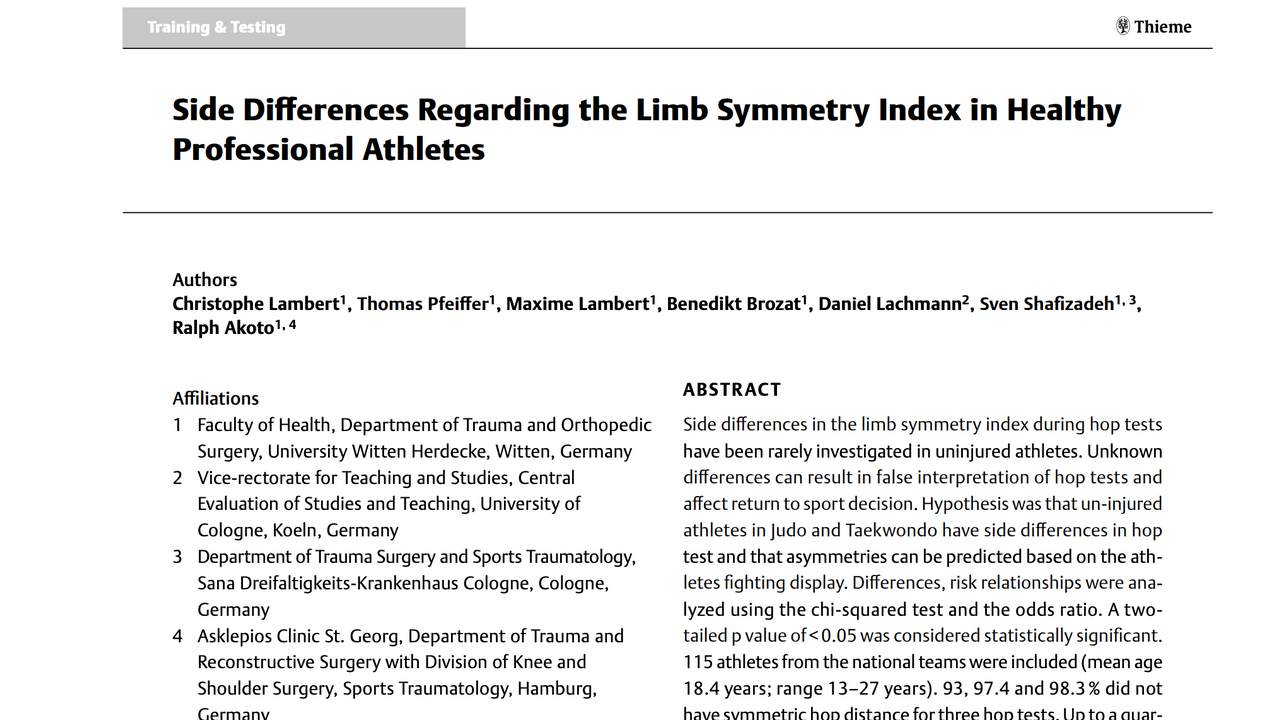Research Review: Side Differences Regarding the Limb Symmetry Index in Healthy Professional Athletes
Jan 15, 2021
Why Use The Limb Symmetry Index
The Limb Symmetry Index (LSI) is a ratio of performance between limb (commonly the lower limb) that is frequently used to assess the risk of injury in ACL Reconstruction patients and identifying their readiness to return to sport as well as can be used to look at the performance of clients for athletic enhancement.
At MAT we commonly use The MAT and Hop MAT, designed specifically for performing tests used in the LSI calculation.

Research Review
Lambert et al investigated assessing the LSI in 115 uninjured Taekwondo and Judo athletes to identify potential discrepancies between limbs.
They performed three common hop tests that we love at MAT, the single-leg hop for distance (SLH), the triple hop for distance (TH), and the crossover hop for distance (COH).

Their findings were that in uninjured athletes, up to a quarter (SLH, 15.7 %; TH, 23.5 %; COH, 32.2 %) of the tested athletes did not reach an LSI of > 90%.
This contradicts many research findings suggesting that a cut off of 90% should be used in return to sport protocols post-injury such as ACL reconstruction.
What Does This Mean For Health And Fitness Professionals?
This study likely highlights the importance of testing the individual, not the test when it comes to objective assessment.
The subjects tested in this study were Taekwondo and Judo athletes, sports that often involve a stance leg and style that is unilateral in natural. This limb dominance is likely a factor in potential discrepancies displayed when testing.
This needs to be considered and factored into the clinical reasoning before defining whether an asymmetry is normal or abnormal. Similar asymmetries might be seen the flexibility of a rowing athlete or the arm strength of a tennis player.

Also just because uninjured athletes show a discrepancy on LSI may not mean that they are completely removed from the risk of injury.
It is possible that the LSI and the hop tests, in this case, may be identifying individuals AT RISK OF INJURIES that have not occurred yet due to discrepancy.
This research also may not factor in levels of fatigue, motivation etc
The key here is that using the LSI and hop tests such as those that can be performed on The MAT and Hop MAT is that you should:
- Set baselines early, whether that be when it's appropriate in a rehab case or during initial assessments when working with a performance athlete.
- Use the data to guide best practices in managing your client.
- Set goals based on data.
- Reassess to track the progression and give more context to your data at appropriate time frames.
- Use this information to continue to steer your client to their goals.
Are you using the LSI and Hop Tests with your patients and clients?
Join the thousands of therapists and trainers worldwide who have stopped guessing and started measuring their patients and clients using the MAT and Hop MAT.
Sign up for our MAT Course today to learn how to use the Hop Tests alongside 50+ other objective assessments.
Click here to sign up for the MAT Course today.
Download Our Measurz App For FREE And Perform, Record and Track 800+ Tests With Your Clients Today.
Want To Improve Your Assessment?
Not Sure If The MAT Data-Driven Approach Is Right For You?
Get a taste of our MAT Course and data-driven approach using the MAT with a FREE module from our online MAT Course.
We hate SPAM. We will never sell your information, for any reason.



